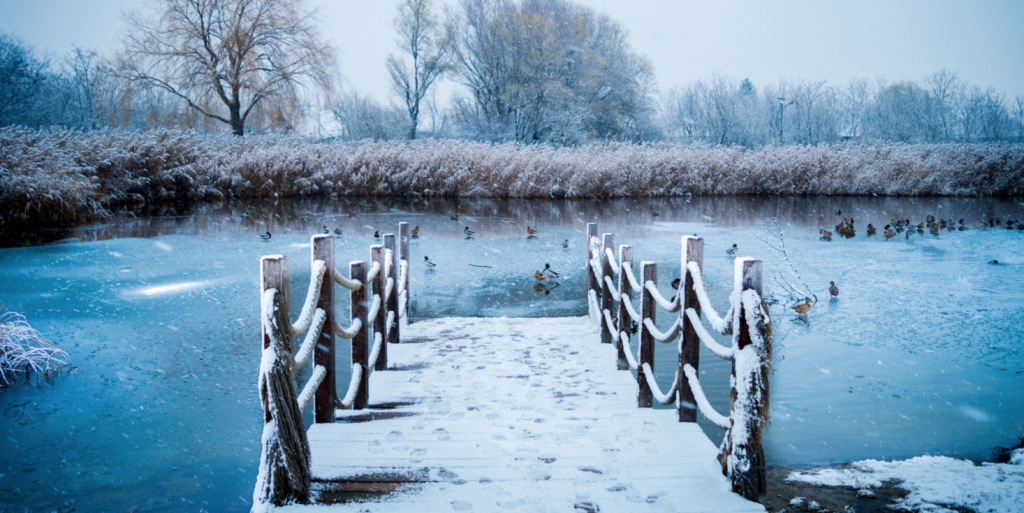Frozen ponds are an excellent source of water that a lot of people tend to overlook. One of the biggest reasons that people don’t take advantage of this option is that it can be difficult to break the ice without stirring up sediment and debris that can contaminate the water. However, there are a couple of tricks that you can use in order to prevent this from happening, and they’re a lot easier than you may think. Here are a couple of suggestions that you can try the next time you’re in the wilderness during the dead of winter.
Ice Shavings
The first option is to scrape some ice from the surface and place the shavings directly into a small pot. Put the pot over a fire and let the ice melt. Strain the water through a suitable filter before boiling it for 10 minutes to kill off any bacteria or other harmful pathogens. One of the advantages of this method is that you can choose a spot that has ice that isn’t contaminated with debris, and this will make filtering it easier. However, it’s also labor intensive and not the most-efficient way to harvest large amounts of water.
Ice Pieces
Another option is to break ice into large pieces that can fit into a bucket or container. Choose the cleanest pieces that you can find to make filtering easier, and leave the bucket outside so the ice doesn’t melt. When you need to make water, simply take a couple of pieces and melt, filter, boil, let cool, and you’re good to go. The nice thing about this method is that you don’t need to make a lot of water at a time, and you don’t have to worry about storage.
Pond Water
There will be times when it makes more sense to use pond water instead of ice, particularly if you are conserving fuel and don’t want to melt ice before purifying the water. Unfortunately, the easiest water to collect will be near the shore, and this is where you are going to run into a lot of sediment that will make the water murky after you break the ice. While you could walk out onto deeper parts of the pond if the ice is thick enough to support your weight to collect cleaner water, it may be safer and easier just to get the water from the shore.
Break the ice with your boot, hammer or the back of your hatchet or axe until you make a hole that’s about a foot in diameter. Remove any large chunks of ice or pieces of debris before letting the sediment settle. It can take anywhere from 5 to 15 minutes for the water to clear, so it’s important to be patient. Once the sediment has settled, all you need to do is carefully put your kettle, pot or container into the water and fill it up.
There may still be some small bits of debris in the water, so consider filtering it through some fabric before boiling it for 10 minutes. Finally, try to find a spot that is around 8-12 inches deep when possible in order to minimize the chances of disturbing the sediment as you scoop out the water.
Try these tips for yourself, and see how easy it is to collect and purify water from frozen ponds or creeks. Chances are that you’ll be surprised that you can get so much water with very little effort, and you can tap into this resource all winter long.

